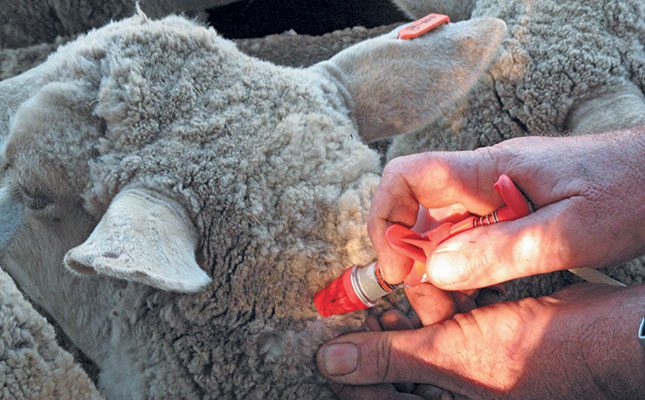
With the proliferation of various livestock diseases, farmers need to become acquainted with the medicines and other remedies they will use throughout their careers.
If you do not understand how these remedies work within the biological system of livestock, then you could actually make matters worse.
For example, employing a deworming drench dose at the incorrect quantities can lead to toxicity if too much is used, or parasite resistance to the remedy if too little is used.
You also need to know what the ‘efficacy’ and ‘classification’ of a particular remedy is. If liver fluke (a dangerous parasite to livestock) is a problem in your area, it won’t help to use a dose that does not counteract liver fluke.
Nasal bots are a common problem in sheep, and some doses do not control this parasite. All reputable livestock medicines and dewormers will have a leaflet, or a sticker on the container that will provide you with the information you need to use the product safely and effectively.
READ Vaccinate your animals: it’ll pay you in the long run
While the wording might differ slightly from manufacturer to manufacturer, the following information will be present, and it’s crucial you abide by the manufacturer’s advice. Let’s use sheep and goats as an example of what to look for:
- The active ingredient or chemicals in the medicine
Usually there will be a combination of two or even three chemicals shown as percentages. For example, one may read ’Albendazole 2%’.
It’s important to know and keep a record of these ingredients. When you change products from time to time (say every second year) in order to guard against parasites becoming resistant to the ingredients, you will then look to buy another product with different active ingredients.
- Directions for use
This will offer information via a list of how much dose is used per kilogram or per 10kg (as is usually the case) and it may show information such as ‘2mℓ per 10kg’.
Some manufacturers make it even easier by showing a table with sheep weights and how many millilitres are used per weight category. For example, 10kg: 2mℓ; 20kg to 40kg: 8mℓ; and so forth.
- The dose efficacy
This is very important to understand, because it will show a list of parasites the dose will counteract. I advise you to use a broad-spectrum remedy that includes a wide range of the roundworm species, tapeworms, nasal worms and bots.
- Warnings and precautions
This is good to know, particularly for human-safety reasons. Some remedies have meat and milk withdrawal periods, meaning that treated livestock cannot be slaughtered for the period indicated, and there will be advice on whether their milk can be consumed.
Instructions may also include how often the remedy can be used.
- Storage advice
Many medicines, including vaccines and antibiotics, are heat sensitive and some may need to remain refrigerated in order to keep them viable.
While I have used sheep and goats as an example, almost all other medications, vaccines and supplements will come with similar instructions.
Don’t buy a product because it’s cheaper than others; this usually signifies issues such as the product not being broad spectrum.
For example, some of the cheaper sheep and goat doses may only act against roundworms, but not against the other parasites I’ve mentioned.
READ Biosecurity protocols to combat livestock diseases
Work together
As I’ve said before, if you farm with a large group of fellow farmers on the same rangelands, which is usually the case in communal farming areas, collaborate to dose, dip, medicate and vaccinate, and so forth, at the same time.
If not all livestock is dewormed simultaneously, this allows untreated animals to act as reservoirs for parasites such as internal worms. The same counts for dipping; undipped animals act as carriers of ectoparasites such as lice and ticks.
With the exorbitant replacement cost of livestock today, it’s unwise to not have a livestock healthcare programme that you stick to. If groups buy together in bulk, you may be able to purchase larger quantities of medicine at reduced cost.
It is also wise to appoint a knowledgeable villager to research the best remedies and medications to use, and to oversee the correct administration of such.
Shane Brody is involved in an outreach programme aimed at transferring skills to communal farmers.











